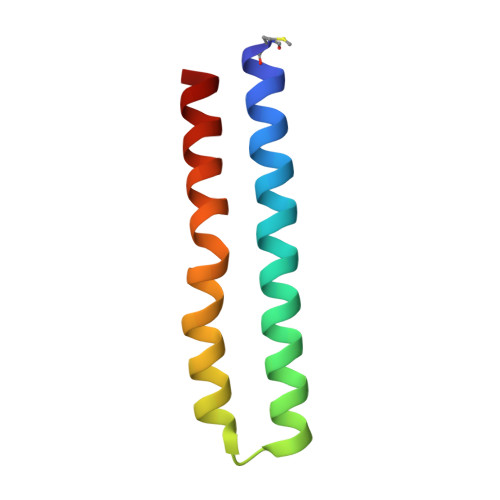A New Type of Proton Coordination in an F(1)F(O)- ATP Synthase Rotor Ring.
Preiss, L., Yildiz, O., Hicks, D.B., Krulwich, T.A., Meier, T.(2010) PLoS Biol 8: 443
- PubMed: 20689804
- DOI: https://doi.org/10.1371/journal.pbio.1000443
- Primary Citation of Related Structures:
2X2V - PubMed Abstract:
We solved the crystal structure of a novel type of c-ring isolated from Bacillus pseudofirmus OF4 at 2.5 A, revealing a cylinder with a tridecameric stoichiometry, a central pore, and an overall shape that is distinct from those reported thus far. Within the groove of two neighboring c-subunits, the conserved glutamate of the outer helix shares the proton with a bound water molecule which itself is coordinated by three other amino acids of outer helices. Although none of the inner helices contributes to ion binding and the glutamate has no other hydrogen bonding partner than the water oxygen, the site remains in a stable, ion-locked conformation that represents the functional state present at the c-ring/membrane interface during rotation. This structure reveals a new, third type of ion coordination in ATP synthases. It appears in the ion binding site of an alkaliphile in which it represents a finely tuned adaptation of the proton affinity during the reaction cycle.
- Department of Structural Biology, Max-Planck Institute of Biophysics, Frankfurt, Germany.
Organizational Affiliation:



















